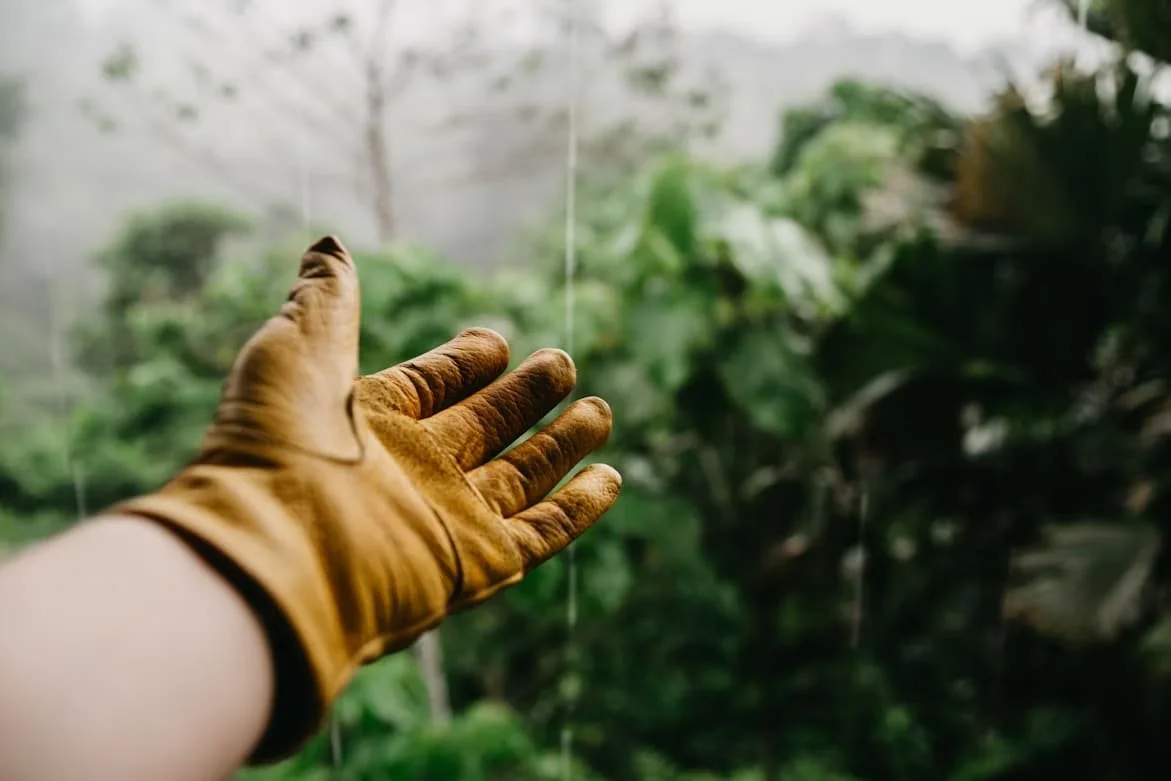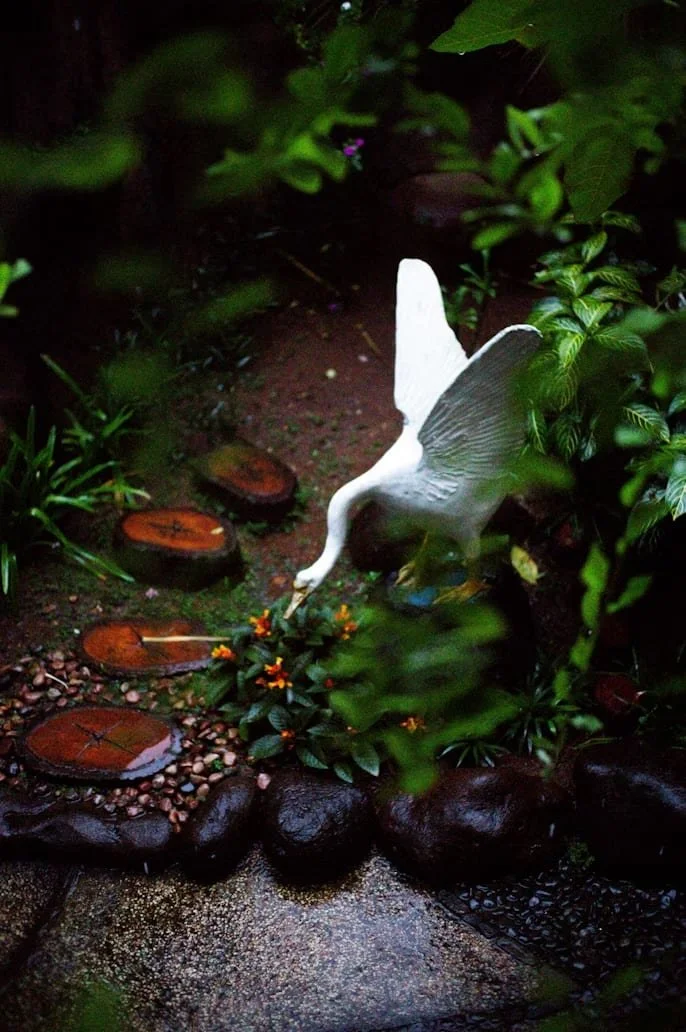Rain Gardens — An Eco-Friendly Solution for Stormwater Management
Dear friend,
If you’ve lived through more than one Appalachian summer, you’ve likely seen it all—sun baking the hillsides in the morning, and by mid-afternoon, thunderheads rolling in like an old grudge, dumping an inch or two of rain in twenty minutes. The ground barely has time to drink before the water is rushing down driveways, pooling at the base of garden beds, or, if you’re unlucky, creeping toward your porch or into your basement.
Stormwater, as any gardener or homeowner knows, can be a blessing or a curse. Too little and our plants wilt; too much, and we’re battling erosion, puddles, and runoff that seems to wash away our best-laid plans.
That’s why I’m such a believer in rain gardens—those humble, beautiful depressions in the landscape that serve as catch basins for excess water, while quietly feeding the earth and offering a haven for pollinators.
A rain garden is, at its heart, a simple idea: a shallow basin planted with deep-rooted, water-tolerant plants. It’s designed to temporarily collect rainwater—whether from a rooftop downspout, a sloped lawn, or a gravel driveway—and allow it to slowly soak into the ground instead of running off into ditches or storm drains.
I built my first rain garden about a decade ago.
The idea struck me after a summer storm that sent water sheeting down the slope behind my barn. It carved a mini-gully into the side yard and left a muddy mess at the foot of a young elderberry shrub. I realized the water wasn’t the enemy—I just hadn’t given it a good place to go.
So I set about digging. I didn’t have any fancy plans or surveying tools. Just a shovel, a wheelbarrow, and a good sense of where the water naturally wanted to flow. I carved out a broad, shallow bowl—maybe six inches deep at the center, gently sloping on all sides—and shaped a small berm at the downhill edge to slow the water and keep it from spilling out too fast.
Next came the fun part: planting.
I chose a mix of native moisture-loving plants—swamp milkweed, Joe-Pye weed, soft rush, and blue flag iris in the wetter center, and coneflowers, black-eyed Susans, and mountain mint along the drier outer edges. I tucked in some sedges (Carex species), which I’ve come to love for their grassy form and ability to bridge wet and dry zones.
And something magical happened. The problem area became a pollinator paradise.
By midsummer, bees buzzed around the milkweed, butterflies flirted with the Joe-Pye, and birds began landing on the seed heads. The soil, once soggy and tired, began to hold together better. And the water? Instead of gushing downhill and disappearing, it paused, pooled gently, and then vanished into the earth—just as it should.
If you’re thinking of building your own rain garden, here are a few pointers I’ve picked up along the way:
1. Start with Observation
The best time to plan a rain garden is during a storm. Put on your boots and take a walk around your property. Watch where the water flows. Look for low spots that already collect moisture or pathways where runoff moves downhill.
Your ideal location is somewhere that regularly receives runoff, is at least 10 feet from your home’s foundation, and sits away from your septic field (if you have one).
2. Design a Gentle Bowl
You don’t need to dig a crater. Most rain gardens are just 6 to 12 inches deep, with a gradual slope from the outer edge to the center. The idea is to hold water just long enough for it to infiltrate—usually within 24 to 48 hours.
If the site is particularly compacted or clay-heavy (common in our area), you might amend the soil with sand and compost to improve drainage. But in many cases, simply loosening the soil is enough.
3. Create a Berm if Needed
On the downhill side, use extra soil to form a small berm—a gentle ridge that holds water in. This helps prevent overflow and gives the water more time to soak in. You can dress the berm with mulch or native grasses for stability.
4. Choose the Right Plants for the Zone
Here in the Southeast, we’re blessed with native plants that thrive in temporary flooding and then bounce back during dry spells.
Center zone (wettest area):
Swamp milkweed (Asclepias incarnata)
Blue flag iris (Iris versicolor)
Soft rush (Juncus effusus)
Cardinal flower (Lobelia cardinalis)
Joe-Pye weed (Eutrochium purpureum)
Mid-zone (moist but not saturated):
Sedges (Carex spp.)
Wild bergamot (Monarda fistulosa)
Boneset (Eupatorium perfoliatum)
Outer zone (drier edges):
Black-eyed Susan (Rudbeckia fulgida)
Purple coneflower (Echinacea purpurea)
Little bluestem (Schizachyrium scoparium)
Mountain mint (Pycnanthemum muticum)
Use mass plantings for visual impact, and mix bloom times so there’s interest from early summer through fall.
5. Mulch Wisely
Add a light layer of mulch to help suppress weeds and retain moisture—but avoid piling it too thick in the center where water collects. I’ve had the best luck with shredded hardwood mulch, which mats down and stays in place better than bark or straw.
6. Keep Maintenance Light and Regular
In the first year, your main tasks will be weeding, watering, and checking for erosion after big storms. Once the plants fill in, they’ll outcompete most weeds, and your job becomes much easier.
Every spring, I cut back dead stalks, refresh the mulch if needed, and keep an eye out for any overzealous volunteers (goldenrod and mountain mint can spread with gusto). But overall, my rain gardens are some of the lowest-maintenance beds I have.
Over time, you’ll find that your rain garden becomes not just functional, but enchanting.
There’s something deeply satisfying about watching water linger in the garden instead of rushing away. It feels like the land is exhaling, taking in what it needs instead of being overwhelmed. And knowing that you’re helping recharge the groundwater, reduce erosion, and support native pollinators only sweetens the experience.
Plus, in an era of more frequent heavy rains and unpredictable weather patterns, a rain garden is a quiet form of resilience. It’s a simple act that says, “I see what’s coming, and I’m choosing to work with nature, not against her.”
You don’t need a huge space. Some of the most beautiful rain gardens I’ve seen are just 4 or 5 feet across, tucked near a corner downspout or nestled at the edge of a sloped walkway.
I always suggest to folks: start small. See how it works. Experiment with plants. Watch how the water moves. And as you gain confidence, you may find yourself wanting to build another.
So next time a summer storm rolls through and you hear the rain drumming on the roof, take a walk outside and notice where the water wants to go. Maybe it’s whispering that it's ready for a rain garden. And maybe you’re just the gardener to give it one.
Yours in watery wonder,
Logan
P.S. Interested in installing a rain garden but not sure where to begin? We can help. Visit Unicorn Farm Nursery & Landscaping to schedule a consultation. Whether you’ve got runoff issues or just want to attract more pollinators, we’ll help you design a beautiful solution that works with your land and your values.

